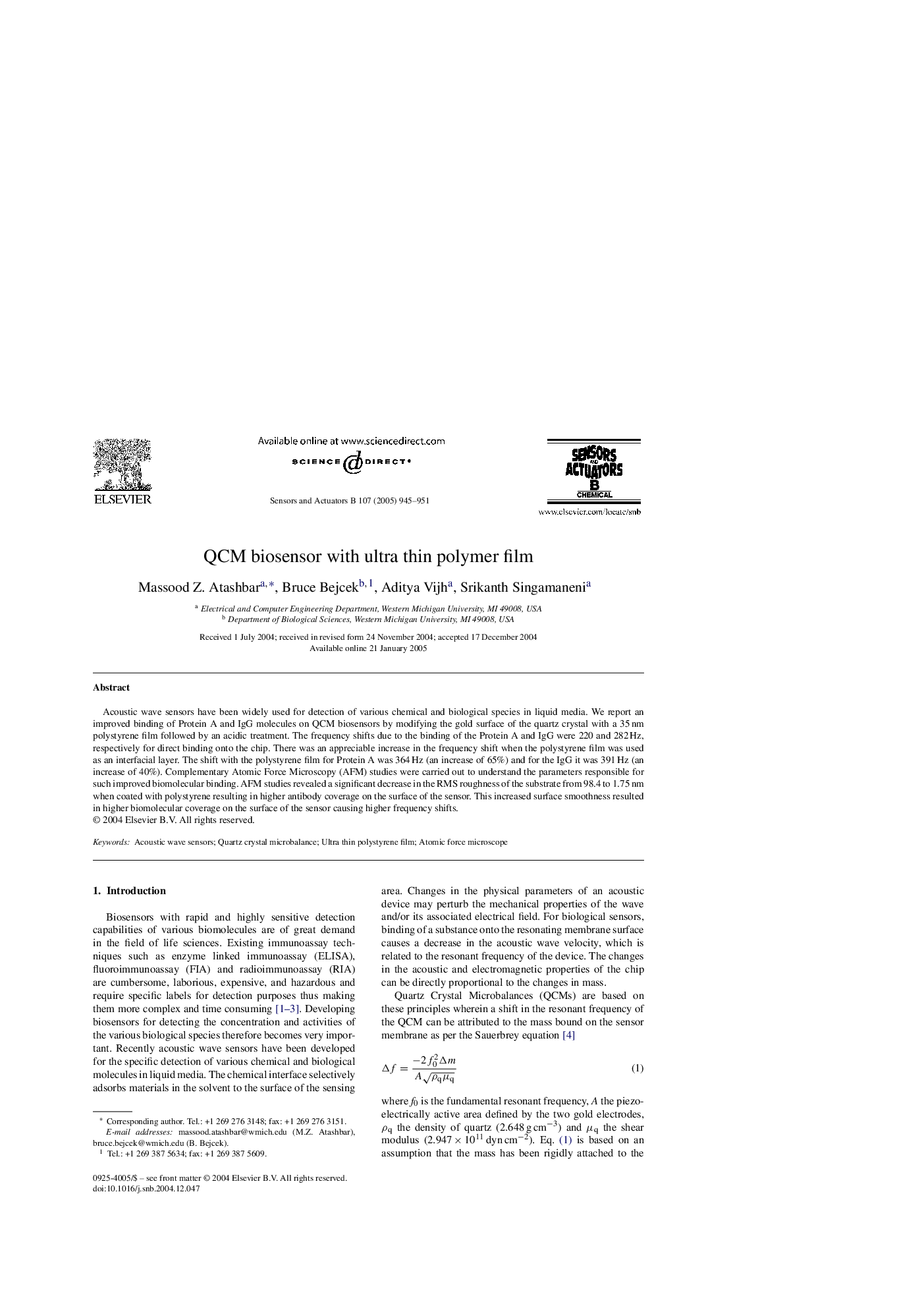| Article ID | Journal | Published Year | Pages | File Type |
|---|---|---|---|---|
| 10410940 | Sensors and Actuators B: Chemical | 2005 | 7 Pages |
Abstract
Acoustic wave sensors have been widely used for detection of various chemical and biological species in liquid media. We report an improved binding of Protein A and IgG molecules on QCM biosensors by modifying the gold surface of the quartz crystal with a 35Â nm polystyrene film followed by an acidic treatment. The frequency shifts due to the binding of the Protein A and IgG were 220 and 282Â Hz, respectively for direct binding onto the chip. There was an appreciable increase in the frequency shift when the polystyrene film was used as an interfacial layer. The shift with the polystyrene film for Protein A was 364Â Hz (an increase of 65%) and for the IgG it was 391Â Hz (an increase of 40%). Complementary Atomic Force Microscopy (AFM) studies were carried out to understand the parameters responsible for such improved biomolecular binding. AFM studies revealed a significant decrease in the RMS roughness of the substrate from 98.4 to 1.75Â nm when coated with polystyrene resulting in higher antibody coverage on the surface of the sensor. This increased surface smoothness resulted in higher biomolecular coverage on the surface of the sensor causing higher frequency shifts.
Related Topics
Physical Sciences and Engineering
Chemistry
Analytical Chemistry
Authors
Massood Z. Atashbar, Bruce Bejcek, Aditya Vijh, Srikanth Singamaneni,
